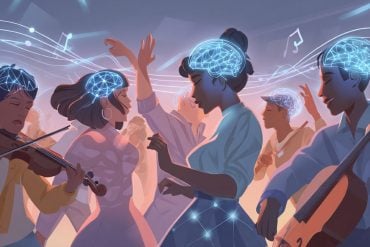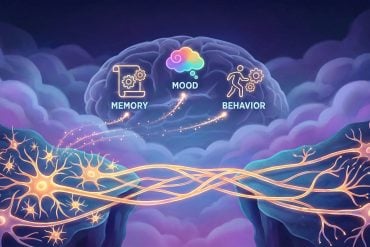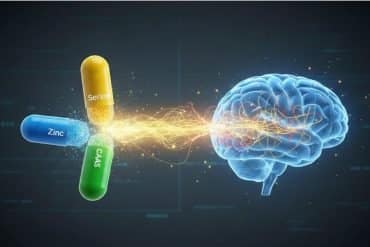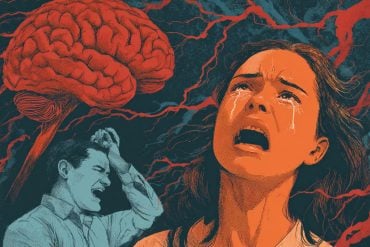Summary: Researchers have identified a molecule in the brain called NEAT1 that plays a key role in light sensitivity, a common and painful symptom of migraines. NEAT1 disrupts the normal balance of nerve signaling by interfering with microRNA activity, leading to increased levels of a pain-related protein called TRPM3.
This results in heightened nerve sensitivity and discomfort in response to light. Blocking NEAT1 or TRPM3 significantly reduced light sensitivity in mice, offering a promising new direction for migraine treatment research.
Key Facts:
- NEAT1 Role: The long noncoding RNA NEAT1 increases light sensitivity during migraines.
- Mechanism: NEAT1 disrupts miR-196a-5p, raising TRPM3 levels and pain signaling.
- Therapeutic Potential: Blocking NEAT1 or TRPM3 reduced photophobia in mice.
Source: Xi’an Jiaotong-Liverpool University
Scientists in the UK, Australia and China have identified a brain molecule called NEAT1 that appears to play a central role in triggering light sensitivity (photophobia), a common and debilitating symptom of migraines.
Their findings, published in The Journal of Headache and Pain, highlight how this molecule affects the brain’s pain response, contributing to the uncomfortable reaction to light that’s common during migraines.
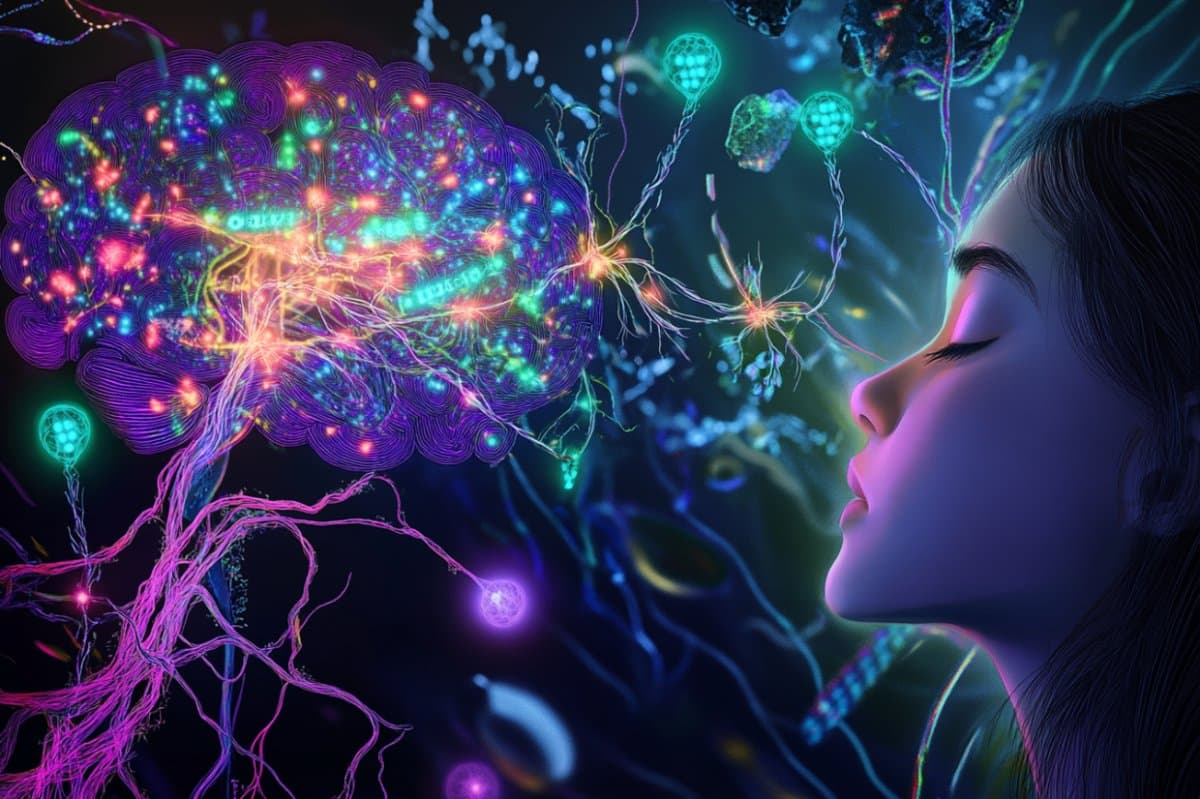
NEAT1 belongs to a group of molecules known as long noncoding RNAs. Unlike most RNA, which carries instructions for making proteins, long noncoding RNAs regulate various cellular processes and help control how other genes function.
NEAT1 is known to be involved in inflammation and stress responses in the nervous system. However, its exact role in migraine-related symptoms like photophobia had not been previously studied.
The researchers used a special chemical to trigger light sensitivity in mice, mimicking how migraines affect people. They then examined a region of the nervous system called the trigeminal ganglion, which is known to be involved in migraine pain. They discovered that NEAT1 levels in this region rose significantly during episodes of light sensitivity.
“When we lowered the amount of NEAT1, the mice became less sensitive to light,” says the study’s first author, Zhuoan Huang, a PhD student at Xi’an Jiaotong-Liverpool University (XJTLU) and the University of Liverpool. “That told us NEAT1 was likely playing a direct role.”
The team found that NEAT1 interacts with two other important molecules in the brain. One is a microRNA known as miR-196a-5p, which normally helps keep the gene Trpm3 in check. Trpm3 produces a protein involved in nerve signalling and pain. When NEAT1 levels are high, it binds to miR-196a-5p, preventing it from doing its job. As a result, Trpm3 levels rise, nerve sensitivity increases, and light becomes painful.
“In short, NEAT1 disrupts the normal balance,” says Huang. “It makes nerves more sensitive and more likely to react to light.”
The researchers also found that blocking either NEAT1 or the TRPM3 protein significantly reduced light sensitivity in mice.
“This supports the idea that this pathway is important,” explains Professor Minyan Wang of the Department of Biosciences and Bioinformatics at XJTLU’s School of Science, who led the study.
“Our research reveals a chain reaction where NEAT1 affects a microRNA, which then changes the activity of a gene linked to pain. This helps explain, for the first time, how light sensitivity might develop during migraines. This study reveals for the first time that light sensitivity can be augmented by this specific type of RNA.”
The findings offer a new perspective on a puzzling migraine symptom and suggest that NEAT1 could be a potential target for future treatments. Since the study was conducted only in male mice and migraines are more common in women, further research is needed to explore its role in females and humans.
“This could be the beginning of a new approach to managing photophobia in people with migraines,” says Professor Wang. “It gives us a better understanding of what’s happening in the brain and where we might intervene.”
About this migraine research news
Author: Catherine Diamond
Source: Xi’an Jiaotong-Liverpool University
Contact: Catherine Diamond – Xi’an Jiaotong-Liverpool University
Image: The image is credited to Neuroscience News
Original Research: Open access.
“Nuclear paraspeckle assembly transcript 1 promotes photophobia behavior in mice via miR-196a-5p/Trpm3 coupling” by Zhuoan Huang et al. Journal of Headache and Pain
Abstract
Nuclear paraspeckle assembly transcript 1 promotes photophobia behavior in mice via miR-196a-5p/Trpm3 coupling
Background
The long noncoding RNA, NEAT1, is recognized as a key regulator of proinflammatory gene expression; Yet, its functional role in migraine remains unexplored, despite the central role of neuroinflammatory mechanisms in migraine pathophysiology.
This study examines the implication of NEAT1 in the trigeminal ganglion activation, which underlies photophobia associated with migraine.
Methods
Light aversion behavior was induced by intranasal injection of the TRPA1 activator, umbellulone. Male mouse behavior was assessed by the total time the mouse stays in the light between the dark and light compartments.
To gain insight to the NEAT1-mediated photophobia mechanism, gene expression of candidate genes and non-coding RNAs interactions were assessed using RNA-sequencing, qPCR analysis, histology and dual-luciferase reporter gene assay.
Results
NEAT1 was upregulated in the trigeminal ganglion of male photophobia mice; Downregulation of NEAT1 by intravenous injection of shNEAT1 adeno-associated virus vectors attenuated NEAT1 expression and alleviated photophobia-like behavior in mice.
The elevated NEAT1 expression in the trigeminal ganglion of photophobia mice corresponds to the downregulation of miR-196a-5p and upregulation Trpm3 RNA level. Predicted analysis suggested NEAT1/miR-196a-5p ceRNA network exists in photophobia mice.
Indeed, knocking down NEAT1 upregulated miR-196a-5p, whilst downregulated Trpm3 gene expression level, in the trigeminal ganglion of photophobia mice. Further investigation using dual-luciferase reporter gene assay identified NEAT1 interacting with miR-196a-5p, whilst miR-196a-5p interacting with Trpm3. Similar to knocking down NEAT1, TRPM3 inhibition reduced photophobia-like behavior.
Conclusion
We conclude that NEAT1 is critical for promoting photophobia behavior via miR-196a-5p/Trpm3 coupling.



